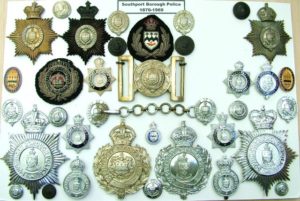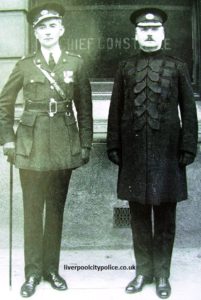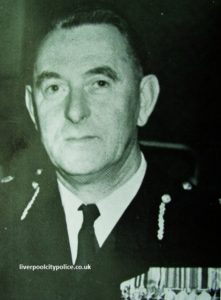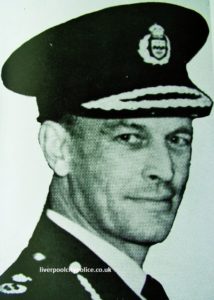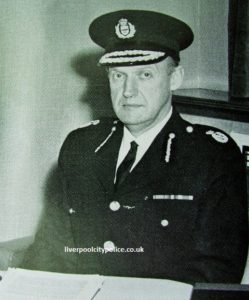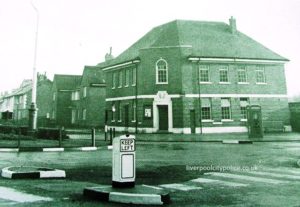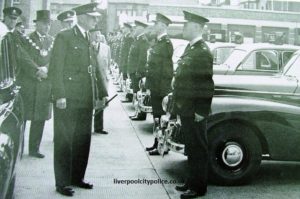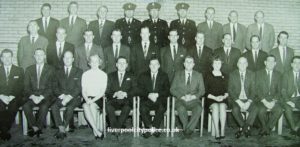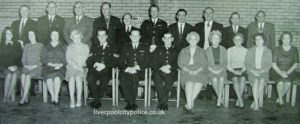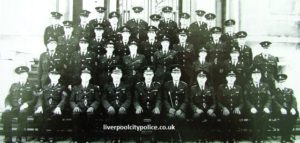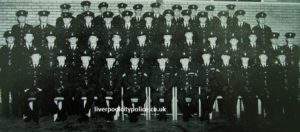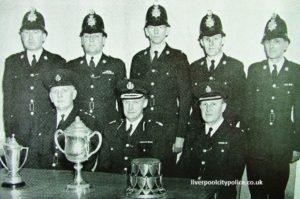SOUTHPORT BOROUGH POLICE by dave wilkinson, retired
Southport County Borough Police
1870 – 1969
In the middle of the 19th century Southport was a small fishing town which was gaining popularity as a holiday resort. It had already caught the attention of many wealthy businessmen in Manchester and industrial east Lancashire as an attractive site for an out of town residence and place of subsequent retirement.
In March 1867, after much debate locally and in Parliament, Southport was granted a charter of incorporation. However, that did not include Birkdale. On 1st June the first Town Council was elected.
The Borough at that time consisted of Blowick in the east, Hesketh Park to the north and Little Ireland, a collection of hovels and primitive dwellings in an area of what is now Hesketh Golf Course. This together with the district of Sussex Road/St. Luke’s Station, known as Little London, is inextricably woven into any history of law enforcement in Southport.
At the time of its incorporation the administration of the law was in the hands of the Lancashire Constabulary, adorned in their unique rifle green uniforms. Firm experienced hands they were indeed. Superintendent Richard Jervis had his office at Ormskirk and was in charge of the division which included Southport.
The next step taken to establish an independent identity for the town of Southport came, as might be expected, in the decision to form a Borough Police Force. The population at that time was between eighteen and nineteen thousand and this was increasing at a fast rate.
The Watch and Public Halls Committee resolved that the town should have its own Force consisting of seven officers including a Superintendent or Head Constable, the total cost being estimated at £552. 12s for the first year. In addition, the Force would be augmented by certain Corporation officials who were to be sworn in as special constables, volunteers of course.
On 23rd March 1870 the Watch Committee appointed Mr Samuel Kershaw to be Superintendent of Police at a salary of £100 per annum with house, coals, gas and clothing provided. At the time of his appointment he was 29 years of age and was the Chief Constable of Glossop.
On 6th April 1870 the Committee submitted a revised estimate for the cost of administering the Force for the year of £700, which was approved. Thus at midnight on 1st May 1870, Superintendent Kershaw (he was not yet designated Head Constable), Sergeant Bothwell and their five Constables took over the Central Police Office at the Town Hall. Their accommodation was described as old, dirty and totally unsuitable for the purpose for which it was being utilised. It comprised rooms at the Lord Street end of Cambridge Arcade. Part was actually beneath the steps leading to the Town Hall. These premises, extended slightly and re-arranged, were to serve as the Central Police Office for the next sixty-eight years.
During the first two months some sixty persons had been arrested for a variety of offences. Bearing in mind that the Force still only comprised five Constables it can be easily understood that the new Force rapidly became respected by the wrongdoer of that time.
Within four years the Force had expanded to eighteen officers and during the year ended September 1874 they made 299 arrests which was 64 more than the preceding year. The embryonic CID was formed in 1874 with the appointment of Sergeant Barrett as Detective Sergeant. Early the following year a further first step was taken with the appointment of Dr Lucas as Police Surgeon.
In August 1875 the areas of Churchtown, Crossens, and Marshside were added to the Borough and in consequence the establishment was increased by a Sergeant and four Constables bringing the strength to twenty five men. By this time Mr Kershaw had been re-designated Head Constable.
The year 1880 added another important responsibility to the town’s administration and marked the severance of another link with the County authorities. In April the Commission of the Peace was received for the Borough of Southport. The town was now in a position to maintain an independent bench of Magistrates and the opportunity was seized with alacrity. Within a few months a Clerk had been selected and the Southport Borough Police Court was constituted.
Step by step modernisation was taking place. In April 1884 the town was doubtless proud and relieved to hear that the “police office and fire brigade station at Southport was now connected with the telephone exchange, telephone number 69, and information of fires, accidents and other matters requiring the attention of the police can now be forwarded direct to the office by any subscriber to the telephone exchange”.
Since his appointment Mr Kershaw had the additional responsibility of being in charge of the town’s volunteer fire brigade. In 1866 it became obvious that for a variety of reasons, the continuance of the voluntary nature of the fire brigade was no longer sustainable and as a result the brigade was henceforth staffed by police officers, who when not required for fire duties would be available for general police work. The plan was the basis for the first full time professional fire brigade in Southport. The system was very efficient and continued until the Second World War when the fire brigades of the UK were formed into one national service. After the war the local brigade was re-formed as the Southport Borough Fire Brigade with its own supervision and administration separate from the police.
By the end of 1888 the force had increased to 44 men but it was remarked that there were only 14 men on patrol at night to maintain the security of 46 miles of streets and safeguard a population of nearly 40,000.
On 18th May 1896, William Elliott a Superintendent in the Nottingham City Police was appointed to succeed James Kershaw as Chief Constable following the latter’s retirement after 26 years in post. Mr Elliott took over a police force with an establishment of 58 men and also the Borough fire brigade consisting of an Inspector, Sergeant and 5 Constables.
By 1905, the population of the town stood at 50,000. In the same year the use of fingerprints was introduced as a method of identifying offenders. In the same year, Southport achieved County Borough status.
In May 1906 William Elliot gave intimation to the Watch Committee of his intention to retire on pension having completed 26 years combined service with the Nottingham and Southport Police. As a result, on the 1st April 1907, Captain Charles Leathley Armitage, a retired army officer with no previous police experience was appointed Chief Constable. Shortly after appointment he persuaded local fire insurance companies to pay certain fire brigade expences when the dealt with incidents on their insured property.
1909 saw the purchase of a police horse ambulance. This was the start of a police provided ambulance service for the town which continued until 1948 when it was taken over by the newly formed (Corporation controlled) Southport Fire Brigade. During its first year of service it attended 68 street accidents. In the same year a mounted section was created consisting of three Constables and horses.
In March 1911, the Watch Committee purchased a Dennis motor fire engine. This proved its worth and less than two years later the Committee invested in a further motor appliance from Leyland motors at a cost of £1,075.
January 1912 saw the first formalised police training for recruits when it was decided to send them for instruction with the Liverpool City Police. Prior to this recruits had been given “on the job” training and very little else apart from some guidance in respect of first aid to the injured.
On 1st April 1912, Birkdale was absorbed into the Borough with the County Police Station there being taken over by the Borough Police. Eight Lancashire Constables who were serving there elected to transfer to the Borough Force. The population of the town now stood at over 71,000 and the established strength of the enlarged force had risen to 94. A short time later this increased to 103 following the introduction of the Police (Rest Day) Act.
Since formation, successive Inspectors of Constabulary had been critical of police accommodation at Southport. 1914 saw the Government warning the Watch Committee that unless office and cell accommodation was improved the exchequer grant would be withheld. However, the declaration of war saw the Committee spared and the matter was put aside as more pressing matters were addressed. In August, Captain Armitage was recalled to the colours as a reservist. He was not to eventually return to the force as Chief Constable. In January 1919, the now Major Armitage submitted his resignation to the Watch Committee. He retired in May of that year but without superannuation as he had not completed the minimum period of service required to obtain a pension.
Throughout the war (1914-1919) Chief Inspector James Wareing acted as Chief Constable. Upon the declaration of war the police began the registration of aliens and the mobilisation of reserve Constables. Within the first six months 12 members of the force enlisted for active military service. In September the military authorities posted to the town for training some 14,000 officers and men, together with 3,000 horses. Predictably it was the police who had to find billets for the men in private houses and hotels. This situation prevailed for the greater part of the war but later the training of men decreased and was replaced by a requirement to house large numbers of wounded soldiers.
In October 1914, 70 Special Constables were sworn-in and by February 1916 the number had risen to 160. July 1916 saw the total number of Southport Police serving their Country in the armed forces was 40. In the latter part of 1918, the acting Chief Constable James Wareing gave notice of his intention to retire after having filled the post for four years. The end of the Great War came at some cost to the Borough Police with five men losing their lives whilst on active service.
In May 1919, Lieut. Col. Frank Brooke, DSO., MC. Was appointed Chief Constable. He had recently left the army having served with great distinction and bravery. Prior to his army service he had spent nine years in HM Customs & Excise. Although his stay in Southport was brief, he was remembered with pride. In June 1920 he left the town on appointment as Chief Constable of Nottingham, followed by Chief Constable of the West Riding of Yorkshire and finally being appointed one of HM Inspectors of Constabulary. Some years later he was Knighted.
Major Michael Joseph Egan was appointed Chief Constable in August 1920. At the time of his appointment he was a District Inspector in the Royal Irish Constabulary.
In September 1920 a motor cycle was purchased for traffic supervision. In July 1927 two, motor cycle combinations were taken into used for the same purpose. December 1930 saw the Committee investing in two motor cars, a Morris Oxford saloon and a Wolseley Hornet two-seater sports car. These were specifically intended for use in enforcing the Road Traffic Act 1930. It was not until 1936 that a separate traffic department was formed with a Sergeant and 4 constables. The previous year two further cars were bought at a total cost of £430.
Early in 1933 the mounted section was disbanded as a cost saving measure. In October the same year the Watch Committee was still “making do” with inadequate and inefficient quarters for both the police and fire brigade and only after the prolonged period of national economy had saved them from renewed criticism by the Inspectors of Constabulary. That said, some £6,000 was spent modernising the fire station in Tulketh Street and in buying new equipment including a new turntable ladder.
In August 1935, responsibility for the weights and measures department was passed to the Medical Officer of Health. At the start of the year Major Egan was awarded the OBE for services to policing. January 1936 saw the Deputy Chief Constable, Superintendent Tom Clark awarded the King’s Police Medal.
As the decade moved towards its end the dark clouds of war were again gathering and the authorities in Southport and elsewhere began to make preparations. The Auxiliary Fire Service was formed with initially 78 members’ later rising to 98 and the Watch Committee bought a new motor fire appliance to replace the aging 1913 Dennis machine at a cost of £1,600. September 1937 saw the reorganisation of the Special Constabulary with the introduction of a rank structure and the appointment of a Commandant, 9 Inspectors, and 36 Sergeants. By the end of 1938 the total strength was 208.
Sometime earlier, approval had been given for the construction of a new Borough Police Headquarters, fire station and Magistrates Court on a large site at the junction of Manchester Road and Albert Road and the approved designs were unveiled on 19th May 1936. The cost initially being estimated to be £79,778 but this was later to rise to £116,007. Work started on the new building in 1938.
On 3rd September 1939, for the second time in living memory war with Germany was declared. Various police reserves were immediately mobilised and the Chief Constable had a total of 519 men available. There were made up of recalled police pensioners, first police reserve and 331 members of the Special Constabulary.
On 30th June 1940 the new police headquarters was ready for occupation. Whilst orders had been placed for new furniture, this had yet to arrive. There was a fear that the building may be requisitioned for housing some government department and because of this the move was quickly completed on a Sunday morning with fire brigade and police vehicles being driven along Lord Street loaded with tables and chairs. This was only surpassed by members of the CID man handling a heavily loaded handcart along the main thoroughfare to take possession of the new accommodation before some else beat them to it. On Monday 1st July, the fire brigade moved from their Tulketh Street base into their new Manchester Road station which formed part of the new police headquarters complex. A resolution from the Watch Committee some ten days earlier had separated the fire brigade from the police and from that time it was to develop along its own lines as a separate entity.
Southport’s experience of bombing by enemy aircraft was very limited compared with the rest of Merseyside. That said, the town did not escape and there were many deaths and great damage to property. In April 1941, a system of police radio was installed which enabled cars to be directed to the scene of incidents. At that time the system was “transmit” only and it was not possible for patrols to reply.
June 1942 saw the Watch Committee approving the recruitment of women for clerical work so as to release police officers for street duty. Essentially, this was the formation of the Women’s Auxiliary Police Corps the establishment of which was fixed at eight.
On 31st August 1942, Major Egan, the Chief Constable was appointed one of HM Inspectors of Constabulary and as a result he left the Borough after completing 22 years’ service as Chief Constable. His replacement was the then Chief Constable of Royal Leamington Spa, Mr Charles Martin.
A reserve column of Southport Police officers made repeated visits to Liverpool and other parts of Merseyside at the height of the air attacks to assist and relieve the hard pressed officers’ local officers. Local conditions were fairly quiet owing to the early closing of public houses which had sold out of intoxicants and a 9 pm curfew of public transport. There were no buses at all on Sundays and this situation was to remain for some time.
By the end of 1942 the regular police strength was 69, compared with the authorised establishment of 115. The various reserves added 102 full-time and 304 part time to this figure. The Special Constabulary were averaging 39 officers on duty each day. Most of these men worked 8pm to 1am, often having already completed their own full day of work.
With the cessation of hostilities preparations were put in hand for the re-establishment of the police service and particular attention was to be paid to training with the establishment of Home Officer controlled centres in various parts of England and Wales where centralised recruit training would take place. The one local to Southport was at No: 1 District Police Training Centre, Bruche, Warrington. The Southport force provided two of the initial fifteen Instructors and since then an almost unbroken succession of Southport officers has been attached to the centre as Instructors and at different times Southport officers have been appointed to the posts of Chief Instructor, Deputy Commandant and Commandant.
In July 1946, before any great changes could be made, Mr Martin, the Chief Constable was appointed 1st Assistant Chief Constable of Liverpool. He subsequently became Chief Constable of Liverpool and after retirement was appointed HM Inspector of Constabulary for the North West. He was made a Knight Bachelor in 1957.
In September 1946, Lieutenant Colonel Harold Mighall, the Superintendent and Deputy Chief Constable was appointed Chief Constable in Mr Martin’s stead. Lt. Col. Mighall is the only Southport Chief Constable to have joined the force as a recruit having been appointed in 1925 at the age of 24 years. During the Second World War he spent a period of time attached to the Control Commission and was greatly involved in the reconstruction of the Italian Police Forces after the liberation of that country. At this time the establishment was increased to 154 and included the creation of a Chief Inspector (Uniform) and a Policewoman Sergeant.
On 7th February 1953 the new police station at Ainsdale was opened by the Home Secretary, Sir David Maxwell Fyffe, QC. M.P. To the side of the new station four flats were built for police officers and their families.
In November 1960, Lt. Col. Mighall announced his intention to retire. His replacement as Chief Constable was Mr Joseph Pessel, the Deputy Chief Constable of Exeter. Mr Pessel commenced his new duties on 16th January 1961. In March 1962, the four 500cc triumph motor cycles which had been in service since mid-1960 were replaced by five B.S.A. 250cc machines which were much lighter and more manageable for patrol work.
In October 1961, approval was given for the construction of sectional police boxes to be built at Preston New Road, Bedford Park, and Devonshire Road. However, a subsequent review of that decision by the Watch Committee saw only one such building constructed at Preston New Road at a cost of £2,900. The building was opened by the Chairman of the Watch Committee on 6th May 1964…
In February 1964, Mr Pessel was appointed Chief Constable of the newly formed Luton County Borough Police. James George Charles Longhurst became the last Chief Constable of Southport when he was appointed on 6th June 1964. He had previously been the Deputy Chief Constable of Hastings, another seaside town.
Mr Longhurst reorganised several aspects of force administration, creating a separate Prosecutions Department and separating the uniform and CID administration. A streamlined process system was introduced in co-operation with the Clerk to the Justices. This resulted in a much reduced paperwork regime. The Watch Committee was also persuaded by him to recruit several additional civilian clerks resulting in the further release of police officers for operational duty.
In October 1967, a new garage was completed at the headquarters complex which resulted in some saving in that it was no longer necessary for vehicles to be ferried back and forth between the old Tulketh Street garage and headquarters. August 1968 saw the introduction of the unit beat police system of policing the Borough. This emulated a system pioneered by the Lancashire Constabulary and involved the use of “panda” car vehicles. The town was divided into areas and each one has a posted “area beat constable” who performs foot and mobile patrol linked to headquarters by means of personal radio. The scheme was not entirely new in Southport as a similar system, albeit using cycles had existed many years previously, which communication being maintained by means of the police telephone boxes.
In September 1968, “Pye” pocket phone radio sets were issued to all uniformed operational patrols and these revolutionised the ability of the police to respond quickly to incidents, not only in Southport but nationally.
The start of this history referred to the change from County Constabulary to Borough Police in 1870 and now 99 years later, at midnight on 31st March 1969, the Southport County Borough Police is to become, together with other Borough Police Forces, part of an enlarged Lancashire Constabulary. The amalgamation is not a voluntary one and Southport did not consent to surrender its independent police force to oblivion without a fight. In December 1967, D.P. Croom-Johnson, Esq., Q.C., published his report on the public enquiry held in connection with the proposed amalgamation. He said, “………….Southport is a very well qualified Force, one in three of the Constables being qualified for promotion to Sergeant”. In his conclusion he said, “……..if there were ever small County Borough Forces which deserved to survive Blackpool and Southport would make two of them, but the benefit from amalgamation both to them and in the area as a whole outweighs this consideration….If it were possible to correct the over-large size of the proposed Force by leaving out Southport and Blackpool I would recommend it. But this is not so.”
The Force takes with it a record of service which justifies the pride of its members, past and present, and it is believed that of the citizens it served. So, at midnight on 31st March 1969, the Southport County Borough Police passed into history.
Dave Wilkinson, Sergeant,
Merseyside Police, Rtd.


